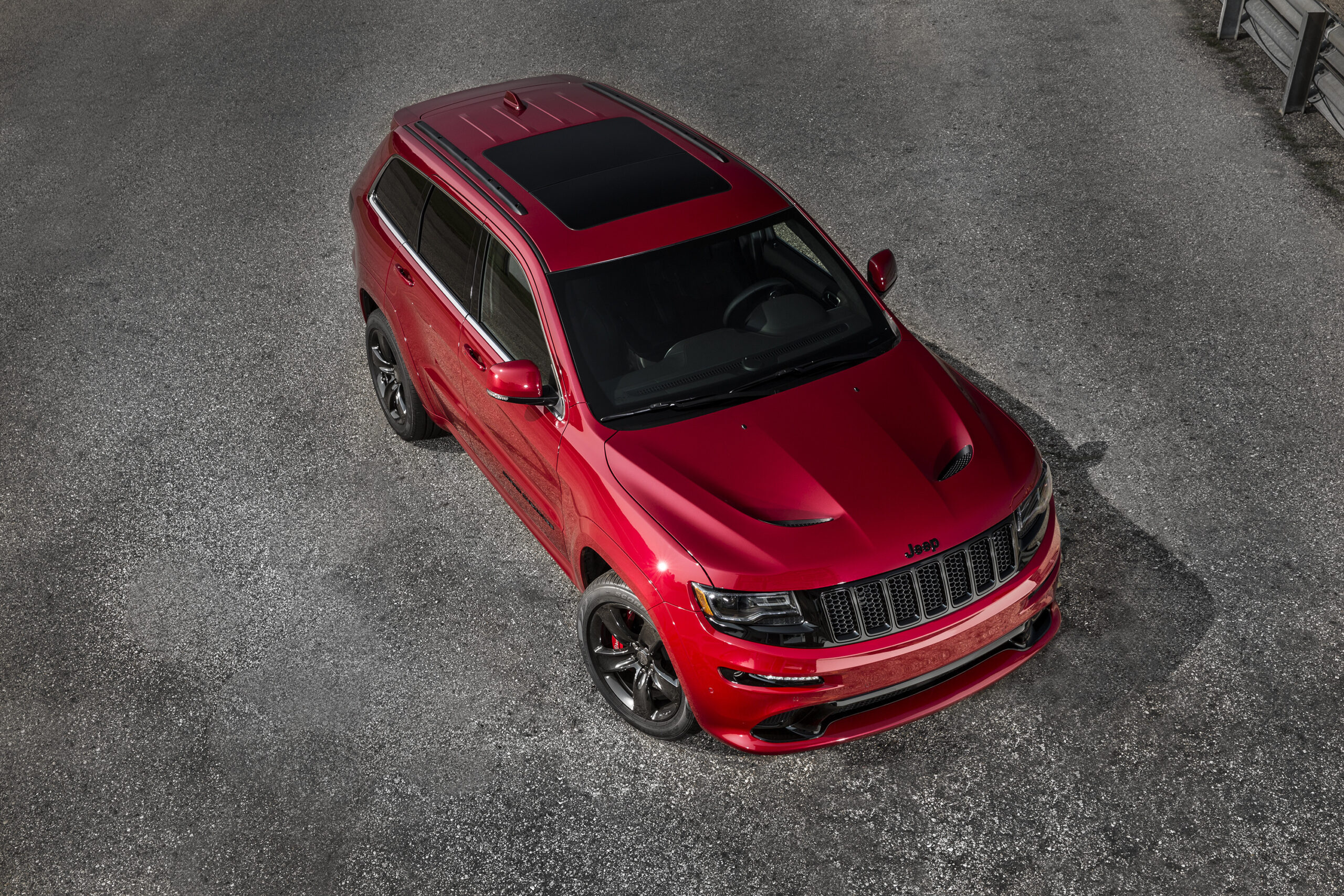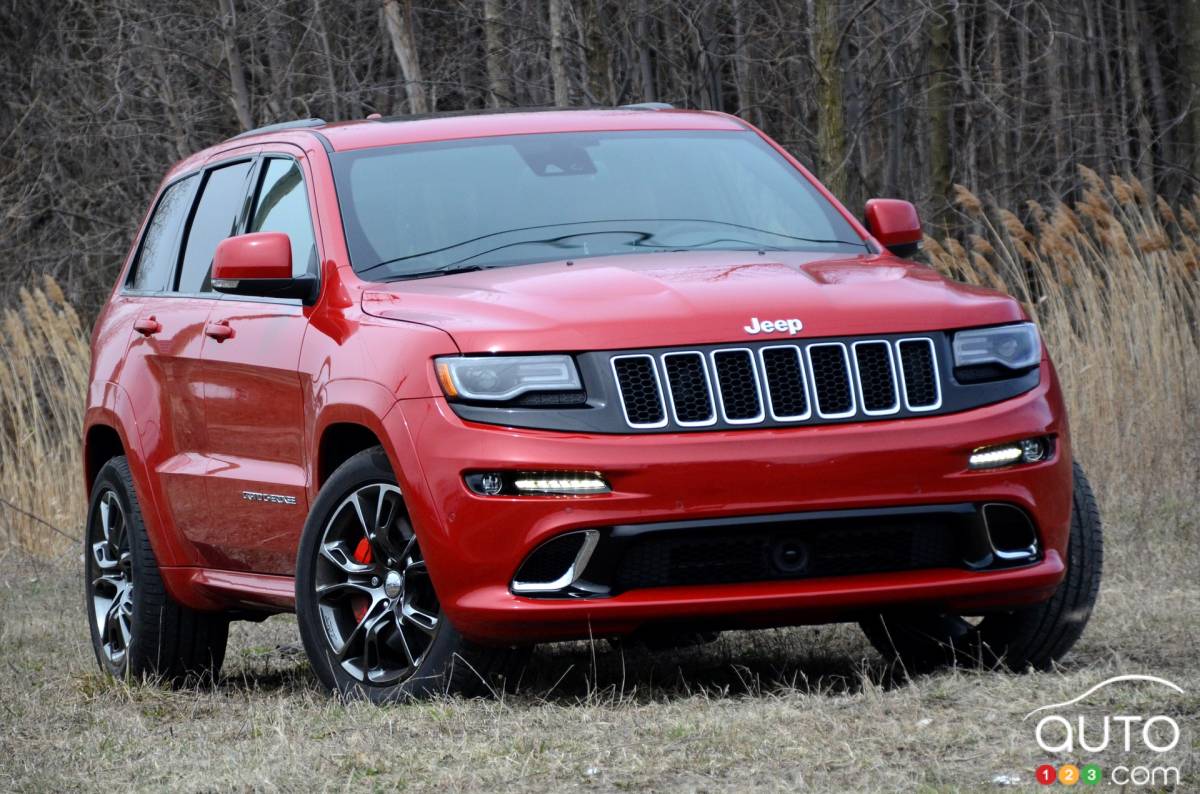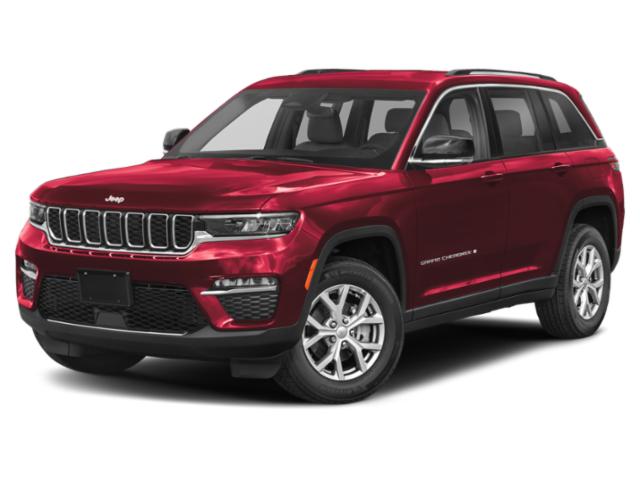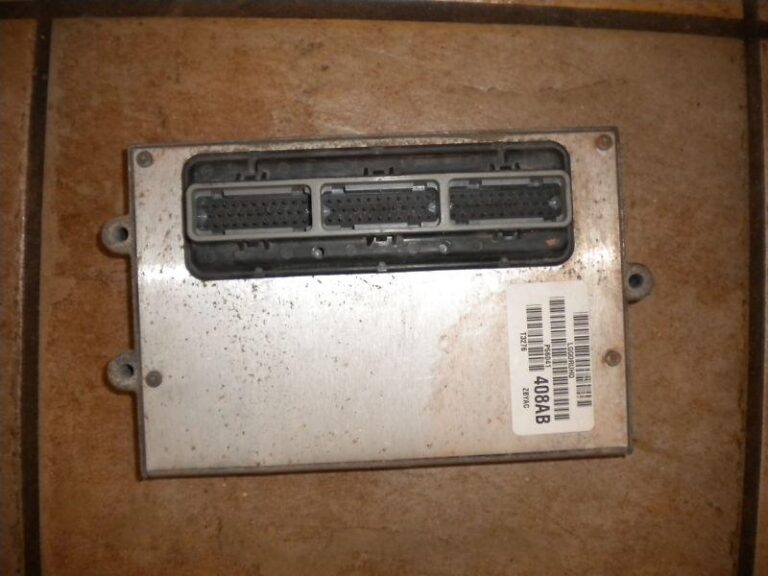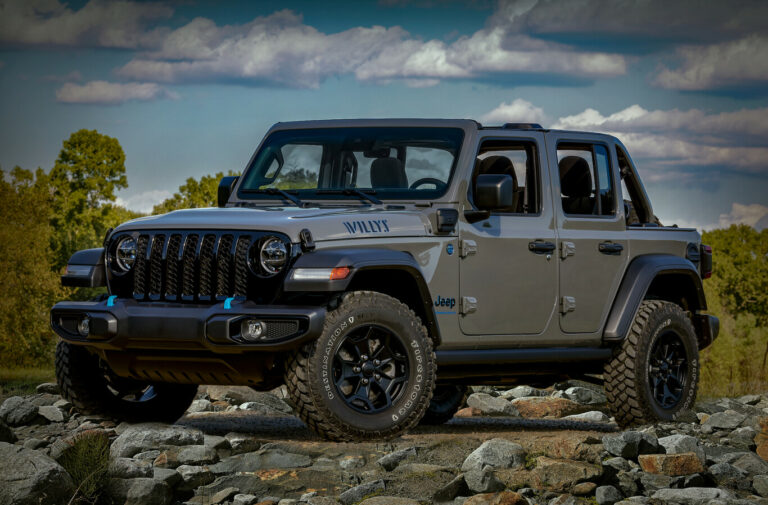Horsepower On SRT Jeep: Unleashing the Beast Within
Horsepower On SRT Jeep: Unleashing the Beast Within jeeps.truckstrend.com
The roar of a powerful engine, the exhilarating surge of acceleration, and the sheer dominance on the road – these are the hallmarks of the SRT Jeep. For enthusiasts and performance aficionados, the term "horsepower" isn’t just a number; it’s the very soul of this extraordinary SUV. The SRT (Street and Racing Technology) division of Stellantis (formerly Chrysler) took the practical Grand Cherokee and infused it with an audacious level of power, transforming it into a high-performance icon. Understanding horsepower on an SRT Jeep means delving into its engineering marvels, exploring the potential for even greater power, and appreciating the delicate balance required to harness such immense force.
This comprehensive guide will navigate the fascinating world of SRT Jeep horsepower, from its formidable stock capabilities to the intricate pathways of aftermarket enhancement. We’ll explore why these vehicles command such respect, what it takes to push their limits, and the practical considerations for anyone looking to unlock the full potential of their own SRT beast.
Horsepower On SRT Jeep: Unleashing the Beast Within
The Legacy of Power: Understanding SRT Jeep Horsepower Stock
The journey of the SRT Jeep is a testament to the idea that an SUV doesn’t have to be slow. It began with the first-generation WK1 Grand Cherokee SRT8, introduced for the 2006 model year. This groundbreaking vehicle was equipped with a 6.1-liter HEMI V8 engine, producing a robust 420 horsepower and 420 lb-ft of torque. It shattered perceptions, proving an SUV could be a genuine performance machine, capable of sprinting from 0-60 mph in under five seconds.
The second generation, the WK2 Grand Cherokee SRT8 (later simply Grand Cherokee SRT), launched in 2012, raising the bar significantly. It featured the larger, more potent 6.4-liter (392 cubic inch) HEMI V8. This engine delivered 470 horsepower and 465 lb-ft of torque initially, later updated to 475 horsepower and 470 lb-ft of torque. This iteration further cemented the SRT Jeep’s reputation as a track-capable family hauler.
However, the pinnacle of factory-stock horsepower arrived with the 2018 Jeep Grand Cherokee Trackhawk. Borrowing the legendary supercharged 6.2-liter HEMI V8 engine from the Dodge Challenger Hellcat, the Trackhawk redefined the performance SUV segment. With a staggering 707 horsepower and 645 lb-ft of torque, it became the most powerful production SUV in the world at its launch. The Trackhawk’s supercharged whine and blistering acceleration (0-60 mph in 3.5 seconds) made it an instant legend, embodying the ultimate expression of "horsepower on SRT Jeep." These stock figures are not merely numbers; they represent years of engineering, development, and a commitment to delivering a truly thrilling driving experience right off the showroom floor.
Beyond Stock: The World of SRT Jeep Horsepower Upgrades
While factory horsepower figures are impressive, the aftermarket community thrives on pushing boundaries. For SRT Jeep owners, the pursuit of more power is often an irresistible siren call. Upgrading horsepower can transform an already potent vehicle into an absolute monster, whether for drag racing, track days, or simply the thrill of overwhelming acceleration. The types of upgrades available vary widely in cost, complexity, and the horsepower gains they deliver:
Intake and Exhaust Systems: These are often the first steps for enthusiasts. Cold Air Intakes (CAI) allow the engine to breathe more freely by delivering denser, cooler air. Aftermarket exhaust systems (cat-back, headers) reduce back pressure, allowing exhaust gases to exit more efficiently. While individual gains are modest (5-20 HP), they improve engine sound and efficiency, setting the stage for more significant modifications.
-
Engine Tuning (ECU Flash/Custom Tunes): This is arguably the most impactful initial upgrade. By reprogramming the Engine Control Unit (ECU), tuners can optimize fuel delivery, ignition timing, and boost pressure (if applicable) for increased performance. A custom tune, specifically tailored to your vehicle and its modifications, can unlock substantial power gains (30-100+ HP depending on other mods) and is essential for safely integrating other performance parts.
-
Forced Induction (Superchargers/Turbos): For dramatic horsepower increases, forced induction is the answer.
- Aftermarket Supercharger Kits: For 6.1L and 6.4L HEMI engines, bolt-on supercharger kits (e.g., Whipple, ProCharger, Magnuson) can elevate horsepower into the 600-800+ range. These systems force more air into the engine, dramatically increasing power output.
- Twin-Turbo Systems: While less common for bolt-on kits due to complexity, custom twin-turbo setups can push horsepower well into the four-digit territory, offering immense power potential.

-
Internal Engine Upgrades: When targeting extreme horsepower levels (e.g., 800 HP and above for a 6.4L, or 1000+ HP for a Trackhawk), the stock internal components of the engine may not withstand the increased stress. Upgrades include forged pistons, connecting rods, and crankshafts, which are stronger and more durable, allowing the engine to handle higher boost pressures and RPMs safely.
-
Fuel System Upgrades: More air and more power demand more fuel. Upgraded fuel systems, including larger fuel injectors, higher-capacity fuel pumps, and sometimes auxiliary fuel systems, are crucial to prevent fuel starvation and ensure proper air-fuel ratios under high load. This is non-negotiable for significant power increases.

Key Considerations for Horsepower Upgrades
Chasing higher horsepower isn’t just about bolting on parts; it requires a holistic approach and an understanding of the potential implications.
- Reliability vs. Power: There’s an inherent trade-off. While well-engineered upgrades can be reliable, pushing an engine to its absolute limits will inevitably reduce its long-term durability and potentially increase maintenance needs.
- Drivetrain Durability: The engine isn’t the only component under stress. The transmission, transfer case, driveshafts, and differentials must be capable of handling the increased torque. For high-horsepower builds, upgrading or reinforcing these drivetrain components is often necessary to prevent catastrophic failures. The Trackhawk’s drivetrain is robust, but even it has limits beyond 900-1000 WHP.
- Braking and Suspension: More power means faster speeds and quicker acceleration. Upgrading the braking system (larger rotors, multi-piston calipers, performance pads) and suspension (coilovers, sway bars, stiffer bushings) is critical for safety, control, and effective power delivery. A powerful vehicle that can’t stop or handle is a dangerous one.
- Cooling System: Generating more horsepower also generates more heat. Upgraded radiators, intercoolers (for forced induction), oil coolers, and transmission fluid coolers become vital to maintain optimal operating temperatures and prevent overheating, which can lead to engine damage.
- Fuel Type: Higher compression ratios and forced induction often necessitate the use of higher-octane pump gas or even race fuel (E85 is a popular choice for high-horsepower builds due to its cooling properties and high octane equivalent).
- Professional Installation and Tuning: Unless you are an experienced mechanic and tuner, professional installation and, most importantly, custom tuning by a reputable specialist are paramount. A poorly tuned engine can run lean, leading to severe damage.
The Ultimate Beast: Achieving 1000+ HP in an SRT Jeep
For a select few, the goal isn’t just more horsepower, but all the horsepower. Achieving 1000+ horsepower in an SRT Jeep, particularly with a Hellcat-powered Trackhawk, is the pinnacle of aftermarket modification. This level of power is typically reserved for dedicated drag racing vehicles or show cars, as it significantly compromises daily drivability and requires extensive, expensive modifications.
To reach and reliably sustain four-digit horsepower figures, a comprehensive approach is required:
- Massive Forced Induction: Larger superchargers (e.g., 4.5L Whipple), custom twin-turbo setups, or even compounding superchargers.
- Fully Built Engine: Forged internals (pistons, rods, crankshaft), stronger valvetrain components, and often a larger displacement (stroker kit).
- High-Capacity Fuel System: Multiple fuel pumps, large injectors, and often E85 or race fuel compatibility.
- Upgraded Drivetrain: Billet transmission components, upgraded transfer case, strengthened driveshafts and axles are essential to prevent components from twisting or shattering under the immense torque.
- Extreme Cooling: Highly efficient intercoolers, multiple heat exchangers, and robust cooling systems are non-negotiable.
- Specialized Tuning: Custom dyno tuning by an expert is crucial to dial in the engine for maximum power and reliability.
The cost and complexity of such a build are substantial, often exceeding the initial purchase price of the vehicle itself. It’s a commitment to extreme performance, requiring ongoing maintenance and a deep understanding of the engineering involved.
Practical Advice & Actionable Insights
For anyone considering enhancing their SRT Jeep’s horsepower, here are some actionable insights:
- Define Your Goals: Are you looking for a slight bump in power for daily driving, a weekend track toy, or a drag strip monster? Your goals will dictate the extent and cost of your modifications.
- Set a Realistic Budget: Horsepower isn’t cheap. Factor in not just the cost of parts but also professional installation, tuning, and potential supporting modifications (brakes, suspension, cooling, drivetrain).
- Research Reputable Shops and Tuners: This is critical. A good tuner can make or break your build. Look for shops with extensive experience specifically with HEMI engines and SRT platforms.
- Start Small, Build Up: Unless you have unlimited funds, consider a phased approach. Start with intake, exhaust, and a tune, then progress to forced induction if you desire more. This allows you to evaluate performance and reliability at each stage.
- Don’t Neglect Supporting Mods: Power without control is useless, and dangerous. Always prioritize upgrades to your brakes, suspension, and cooling system to match any significant power increase.
- Understand the Risks: Be aware that modifying your engine, especially with forced induction, will likely void your factory warranty. Also, pushing power limits inherently increases the risk of component failure.
Estimated Costs for SRT Jeep Horsepower Upgrades
The cost of increasing horsepower on an SRT Jeep can vary dramatically based on the desired power level and the quality of components. The following table provides estimated ranges for common upgrades:
| Upgrade Category | Typical Horsepower Gain (Approx.) | Estimated Cost Range (Parts & Labor) | Notes |
|---|---|---|---|
| Cold Air Intake (CAI) | 5 – 15 HP | $300 – $800 | Improves throttle response, minor sound change. |
| Cat-back Exhaust System | 10 – 20 HP | $1,000 – $3,000 | Enhanced sound, minor power bump. |
| Long-Tube Headers | 15 – 30 HP | $1,500 – $4,000 | More significant exhaust flow, often requires tuning. |
| ECU Tune (Custom/Off-the-shelf) | 30 – 80+ HP (depends on other mods) | $500 – $2,000 | Crucial for optimizing performance, essential for forced induction. |
| Aftermarket Supercharger Kit | 150 – 300+ HP | $8,000 – $18,000 | Major power increase, requires supporting mods & tuning. |
| Fuel System Upgrade | Required for high HP builds | $1,000 – $4,000+ | Essential for supercharged/turbocharged applications. |
| Forged Engine Internals | Enables 800+ HP reliably | $5,000 – $15,000+ | For extreme builds, highly labor-intensive. |
| Transmission/Drivetrain Upgrade | Enables 800+ HP reliably | $3,000 – $10,000+ | For high torque applications, crucial for durability. |
| Full 1000+ HP Build | 1000+ HP | $30,000 – $60,000+ | Comprehensive build including all necessary upgrades and custom work. |
Note: Prices are estimates and can vary significantly based on brand, installer, location, and specific vehicle model/year. Always get detailed quotes.
Frequently Asked Questions (FAQ) About SRT Jeep Horsepower
Q: Will upgrading horsepower void my warranty?
A: Yes, generally any significant aftermarket modification to the engine or drivetrain, especially those increasing horsepower, will likely void your factory powertrain warranty. Check with your dealer or warranty provider for specifics.
Q: How much horsepower can a stock SRT Jeep engine handle reliably?
A: A 6.4L (392) HEMI typically handles around 600-650 horsepower at the crank without needing forged internals for reasonable reliability. The supercharged 6.2L (Trackhawk) engine is significantly stronger and can often handle 800-900 wheel horsepower (WHP) with appropriate tuning and fuel before internal engine upgrades become a necessity for long-term reliability.
Q: Is it worth upgrading an SRT Jeep for daily driving?
A: It depends on the extent of the upgrades. Minor modifications like a cold air intake, cat-back exhaust, and a mild tune can enhance the daily driving experience without compromising reliability too much. Extreme horsepower builds (800+ HP) often introduce compromises in drivability, fuel economy, and noise, making them less ideal for daily use.
Q: What’s the first modification I should consider for more power?
A: After basic intake/exhaust mods, a quality ECU tune is often the best first step for significant, safe horsepower gains, as it optimizes the engine’s parameters. This also lays the groundwork for future modifications.
Q: Do I need to upgrade my transmission for more horsepower?
A: For moderate horsepower gains (e.g., up to 600-650 HP on a 6.4L or 800-900 HP on a Trackhawk), the stock transmissions (often ZF 8HP) are remarkably robust. However, for pushing beyond these levels, especially with aggressive driving, transmission and other drivetrain component upgrades or reinforcement become highly recommended to prevent premature wear or failure.
Conclusion
The allure of horsepower on an SRT Jeep is undeniable. From its impressive stock capabilities, which redefine what an SUV can be, to the boundless potential offered by the aftermarket, these vehicles are a canvas for performance enthusiasts. Whether you’re content with the factory muscle of a Trackhawk or aspire to build a 1000+ horsepower monster, the journey into SRT Jeep horsepower is a thrilling one.
It’s a journey that demands respect for engineering, a commitment to quality, and a clear understanding of the balance between raw power, reliability, and safety. Ultimately, owning and modifying an SRT Jeep is about more than just numbers; it’s about the visceral experience, the passionate community, and the continuous pursuit of automotive excellence. The SRT Jeep isn’t just a vehicle; it’s a testament to the power of American muscle, roaring down the road, leaving an indelible mark wherever it goes.

